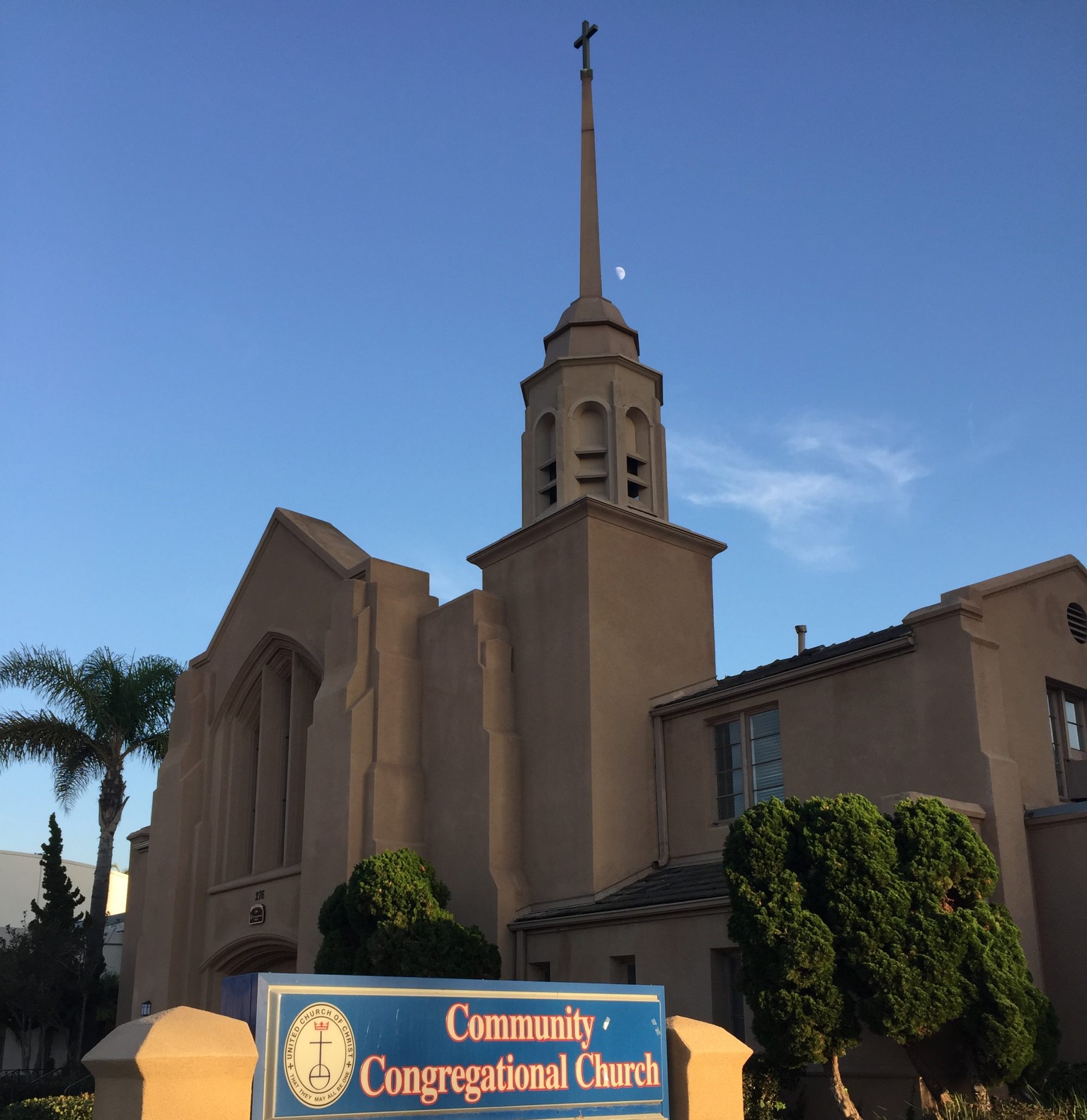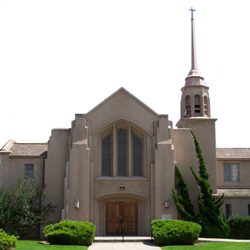“Delegation, Jesus Style”
A meditation based on Mark 6:1-13
July 8, 2018
Community Congregational Church of Chula Vista
Dr. Sharon R. Graff
* * * * *
“Are you a Christian?” The question was tentative, the voice trembled almost as if asking such was treasonous. “Yes, I am,” I replied. With a smile, she softened. “Me, too…” she said, and then continued to tell me the story of how she left one church she’d been attending because the pastor was telling the congregation they needed to vote for the “Christian candidate.” She herself was repulsed by that candidate’s public behavior, bullying, harassment, and equally offended by the Christian pastor’s support. In our exchange, she was asking a question on many of our lips, “What does it mean on this day and in this season to be Christian?”
What does following Jesus, the Christ, look like in 2018 America? I have some thoughts on this. Today’s scripture lesson also provides us with some helpful responses. But, first, what do you think? What does following Jesus, the Christ, look like in 2018 America?
Think on that for a moment, and let’s hear what you think… [share aloud…]
That little vignette I shared with you a moment ago, actually occurred at a recent Chula Vista breakfast I attend each month. Somewhere between 60 and 100 of us community leaders gather on the first Friday of the month, with one goal in our minds: to do our part to help Chula Vista be the best it can be. We do this by pledging to work together and learn together. My job each month is to begin the breakfast with prayer, and from there, various leaders of organizations offer programs that enlighten and inspire us. We sit at circular tables, not unlike those back in Bradley Hall, which encourage conversation and eye contact. Together. The whole event is about “together.”
That’s a powerful concept, isn’t it—together—especially when we reflect on what it means to be Christian in this day and age. Let’s turn our attention to the passage from Mark’s gospel, and hear what Jesus might say in response to our question. Seeing the crowds of people flocking to hear his teaching, being so exhausted that he and the disciples move away from land—not once but three times in as many chapters—Jesus knows that the concept of “together” is the only way to get the work done. He cannot go it alone. And, in this passage today, Jesus puts into practice that concept of “together.” Let’s hear and see that again…this time, from The Message Bible, a modern language version of scripture.
Jesus left there and returned to his hometown. His disciples came along. On the Sabbath, he gave a lecture in the meeting place. He made a real hit, impressing everyone. “We had no idea he was this good!” they said. “How did he get so wise all of a sudden, get such ability?”
But in the next breath they were cutting him down: “He’s just a carpenter—Mary’s boy. We’ve known him since he was a kid. We know his brothers, James, Justus, Jude, and Simon, and his sisters. Who does he think he is?” They tripped over what little they knew about him and fell, sprawling. And they never got any further.
Jesus told them, “A prophet has little honor in his hometown, among his relatives, on the streets he played in as a child.” Jesus wasn’t able to do much of anything there—he laid hands on a few sick people and healed them, that’s all. He couldn’t get over their stubbornness. He left and made a circuit of the other villages, teaching.
Jesus called the Twelve to him, and sent them out in pairs. He gave them authority and power to deal with the evil opposition. He sent them off with these instructions:
“Don’t think you need a lot of extra equipment for this. You are the equipment. No special appeals for funds. Keep it simple.
“And no luxury inns. Get a modest place and be content there until you leave.
“If you’re not welcomed, not listened to, quietly withdraw. Don’t make a scene. Shrug your shoulders and be on your way.”
Then they were on the road. They preached with joyful urgency that life can be radically different; right and left they sent the demons packing; they brought wellness to the sick, anointing their bodies, healing their spirits.
You can just feel the energy of “together,” right?! Whereas a few verses before, we encounter a sleeping, spent Jesus, here, he and the disciples are re-energized by the simple act of choosing to not go it alone.
Two by two…not just for Noah and the ark, friends…far beyond procreative purposes…two by two is the way to get the work done. You know that. You know the power of “together…” You practice it regularly around here. The quilters, for example, don’t make those beautiful quilts working alone; together, they encircle the fabric with precise needles and practiced fingers. The choir, now taking a little vacation, knows that it takes all parts—sopranos, altos, tenors and basses—to bring the music to life. Even a sermon, though it appears to be the product of singular work, is only as effective as the congregation hearing it. This we know by looking at the two crowds of people in the gospel lesson from Mark. With one, in his hometown, even Jesus is ineffective. “Jesus wasn’t able to do much of anything there—he laid hands on a few sick people and healed them, that’s all. He couldn’t get over their stubbornness. He left and made a circuit of the other villages, teaching.” Not one to linger, the gospel story says, Jesus left their stubbornness in the dust, just as he would later teach his disciples also to do. He, and they, turned their attention to those whose hearts and minds and souls were open to learn and be well. And the gospel describes their effectiveness with that second group, “…right and left they sent the demons packing; they brought wellness to the sick, anointing their bodies, healing their spirits.” We know when the spark that the gospel calls “healing” occurs—whether it is healing in body, mind, soul—when we’ve been touched by thoughtful words or kind actions, the effect is marked by our own receptiveness. Jesus knows this. He knows that healing is an exchange between the healer and the one being healed. He knows that learning to the point of transformation—the gospel calls it “repentance”—that kind of learning is also an exchange between teacher and disciple. And we know it, too. When our lives have taken a turn for the better, it’s because we have participated and heard and put into practice that which we’ve received.
In our age there is rampant individualism that seems to care not for its effects on community or the environment. In our age, Jesus’ teaching on the absolute necessity of “together” is counter-cultural, controversial, even to some naïve. Yet this lesson that Jesus teaches—with words, with actions, and by practicing it with his disciples—has found voice throughout human history. Nearly 500 years ago, poet and cleric John Donne wrote the same and I invite you to hear his words as a sort of blessing of the choice you have to go it together:
No man is an island entire of itself; every man is a piece of the continent,
a part of the main; if a clod be washed away by the sea, Europe is the less,
as well as if a promontory were,
as well as any manner of thy friends or of thine own were;
any man’s death diminishes me, because I am involved in mankind.
And therefore never send to know for whom the bell tolls; it tolls for thee.
In other words, we are in this together. Humans, creatures, plants, sky, earth, fire, democrats, republicans, independents, and all. We are in this together. And together, Jesus calls us to make it better. To work together. To learn together. To care together. To offer compassion together and to be healed together. To love our God and love our neighbor… together. This is radical. This is even controversial. And it is certainly still counter-cultural, part of what it means to be Christian in America in 2018.
Amen and Blessed Be!

